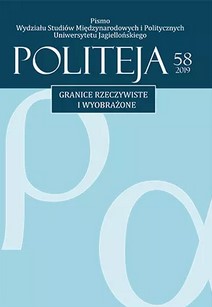LIMINALNOŚĆ KRAJOBRAZU KULTUROWEGO
LIMINALITY OF THE CULTURAL LANDSCAPE
Author(s): Wojciech BedyńskiSubject(s): Human Geography, Cultural Anthropology / Ethnology, Social differentiation, Sociology of Culture, Migration Studies
Published by: KSIĘGARNIA AKADEMICKA Sp. z o.o.
Keywords: cultural landscape; multi‑sited ethnography; migration;
Summary/Abstract: According to Tim Ingold, cultural landscape is not „land” nor „space”, but is a dweller’s narration on the reality that surrounds him or her. This narration is in permanent process, it grows with the society that lives in a certain place, parts of it die with the people that pass away. Although it is subject to individual reception, some narrations are shared by many. Therefore it is both personal and social phenomenon. This narrative landscape is full of borders and spheres that are built on symbolic values of places and objects. In traditional societies it has been well visible – one could easily distinct the narration of the forest from the narration of the village. In the modern world the landscape has gone through a major transformation, nonetheless it kept crucial mechanisms of its construction. Contemporary multi‑sited landscapes or virtual landscapes also contain borders and spheres, are individual and shared by many. This article presents recent changes in the approach to the liminality of the cultural landscape, differences that were experienced when passing from traditional to modern society. This change is particularly visible when comparing generations: new global generation (generation Y, generation Z) has a different experience of the landscape than generation of their parents and grandparents – who had grown in a still local and territorially defined places. But new landscapes do have borders and spheres, however their shape may be slightly different.
Journal: Politeja - Pismo Wydziału Studiów Międzynarodowych i Politycznych Uniwersytetu Jagiellońskiego
- Issue Year: 16/2019
- Issue No: 58
- Page Range: 31-45
- Page Count: 15
- Language: Polish

